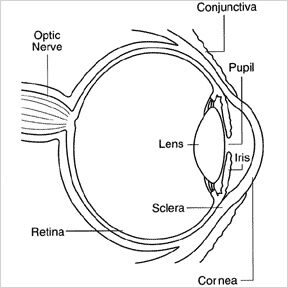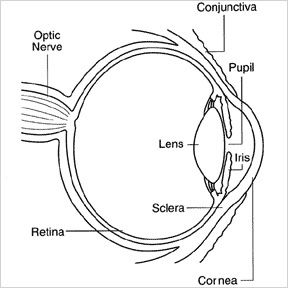Blog
Conjunctivitis (Pink Eye)

What is pink eye?
Pink eye refers to inflammation of the conjunctiva—the layer of thin, clear tissue lining the inside your eyelids and covering the whites of your eyes. Inflammation makes the blood vessels more visible, giving the appearance of pink eye.
What causes pink eye?
 There are several types of pink eye, which vary depending on their cause.
There are several types of pink eye, which vary depending on their cause.
- Viral conjunctivitis is caused by viruses, such as adenovirus and herpesvirus, and may occur if you also have an upper respiratory tract infection, cold, or sore throat. It tends to affect both eyes.
- Bacterial conjunctivitis is a bacterial infection, often due to Staphylococcus aureus, Streptococcus pneumonia, or Haemophilus. It is a common reason for children to stay home from school and tends to occur in one eye.
- Allergic conjunctivitis develops after exposure to allergens like pollen and dust.
- Irritants, such as contact lenses and lens solutions, pool chlorine, cosmetics, or smog can cause conjunctivitis.
- Newborns can get pink eye within two weeks of birth, due to exposure to bacteria or viruses in the birth canal; irritation from eye drops or ointment given at birth; or due to a blocked tear duct.
What are the symptoms of pink eye?
Pink eye can cause redness, itching, and tearing. You may also have:
- A feeling like something is in your eye
- Sensitivity to bright light
- Conjunctival swelling
- Enlarged lymph nodes near your ear, in response to infection
- Discomfort wearing contact lenses
How is pink eye diagnosed?
 Your healthcare provider can examine your eyes and determine if you have pink eye, as well as identify the cause by asking you what other symptoms you may have. Sometimes a sample of discharge from the affected eye is tested to determine the cause.
Your healthcare provider can examine your eyes and determine if you have pink eye, as well as identify the cause by asking you what other symptoms you may have. Sometimes a sample of discharge from the affected eye is tested to determine the cause.
Can pink eye be treated?
Viral conjunctivitis usually goes away on its own in one to two weeks. Bacterial conjunctivitis may resolve on its own or be treated with antibiotics, which can shorten the illness and reduce the risk of spread. Holding warm, wet compresses over the affected eye can relieve your symptoms; just be sure to use a fresh washcloth each time. Allergic and irritant-related conjunctivitis go away when the allergen or irritant is removed. Newborn pink eye may be treated with antibiotics if it is bacterial or warm massage between the eye and nose for blocked tear ducts.
What can I do to prevent the spread of pink eye?
Viral and bacterial pink eye are very contagious.
- Wash your hands often and well and avoid touching or rubbing your eyes.
- Avoid sharing towels, blankets, pillowcases, makeup, eyeglasses, or contact lens cases.
- Keep eyeglasses and contact lenses clean.
- After your conjunctivitis is gone, throw away any eye or face makeup and applicators, contact lens solutions, contact lenses, and lens cases you used while you had the infection, and clean your eyeglasses and eyeglass case thoroughly.
Source: The National Eye Institute (NEI)
Join our Mission
Lighthouse Guild is dedicated to providing exceptional services that inspire people who are visually impaired to attain their goals.
